The most fascinating myths Lara Croft has defeated, and where they come from
Believe it or not
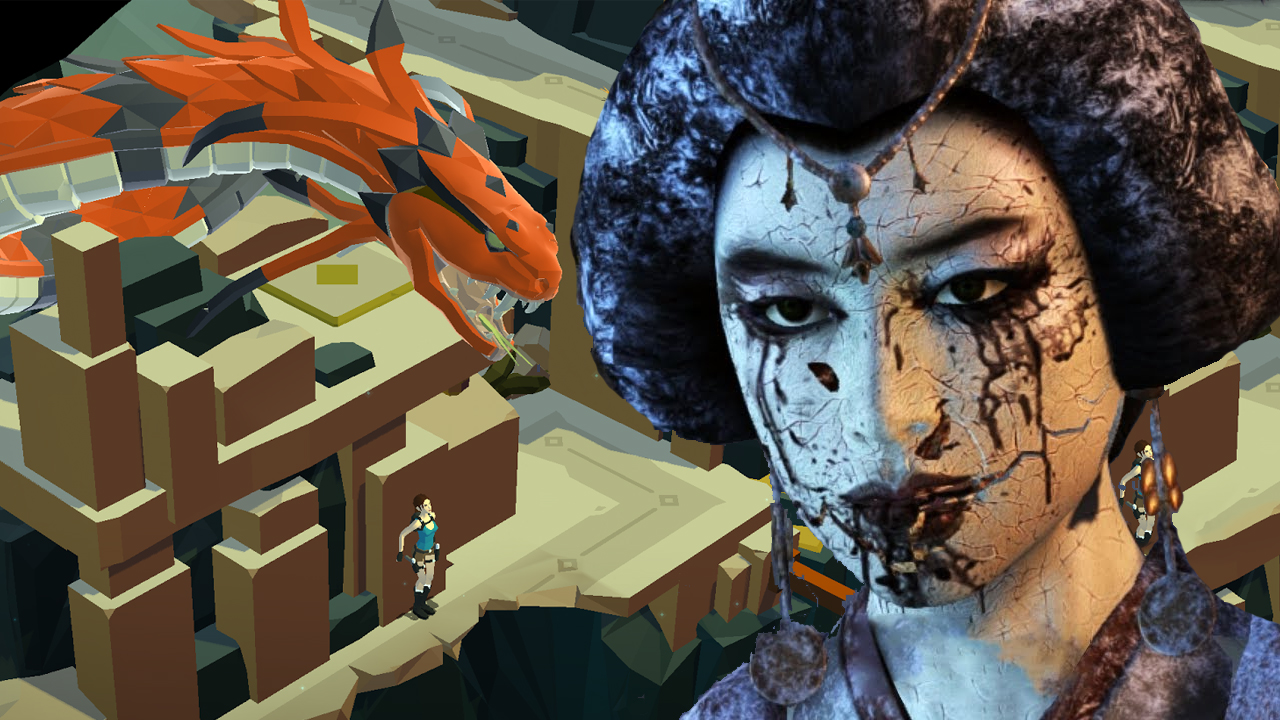
Rise of the Tomb Raider is about to make its grand and panic-ridden entrance, and we'll finally get to see where Lara's obsession with the world's most ancient and murderous legends came from. Oh, the myths Ms. Croft has uncovered in her days. Skeptics might say her discoveries are limited to a few mutants and too many tyrannosaurus rexes (like, at least four) but in-between she's encountered some of the biggest and baddest fables of all time. And curiously enough, many look pretty familiar, proving that a lot more research went into them than you might think.
In order to properly document her cryptozoological endeavors, I've painstakingly archived the most fascinating beasts, spirits and deities Lara's met (and promptly shot) in her travels. And just for context, you'll find a few runners-up - when centaurs and mummies didn't quite make the cut, you know the winners are gonna be good.
Chinese Dragon (Tomb Raider 2)
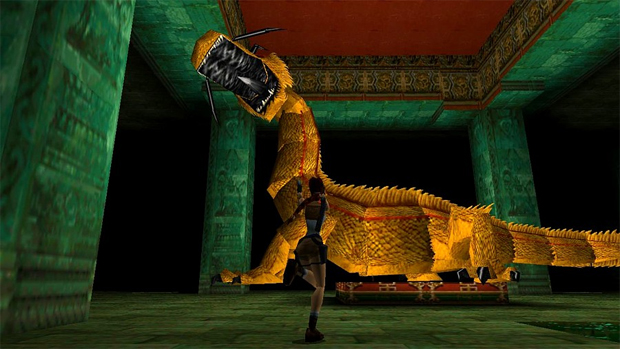
Runners-up: Yetis, Garuda
While the method of transforming a human being into a dragon - by stabbing them in the chest with a magic knife - is a Tomb Raider original, most will recognize the final boss that results as a traditional Chinese dragon. Visually, it's all there - the elongated body, the almost furry-looking claws, and the ever important whiskers. But look deeper, and it's actually more of a hybrid, a mix between Chinese and European instances of a dragons powers and behavior.
For instance, while some Chinese dragons are associated with fire, many more are closely tied to water and the weather. They're also regarded as noble bringers of fortune, and to be associated with a dragon is a mark of honor - there's a reason that baby booms tend to happen during the Year of the Dragon. By contrast, the dragon Lara fights breathes fire as its main means of attack, in keeping with European tradition, and is far from an honorable soul. Good thing too - killing any other Chinese dragon would make Lara look like a monster.
Doppelganger (Tomb Raider Underworld)
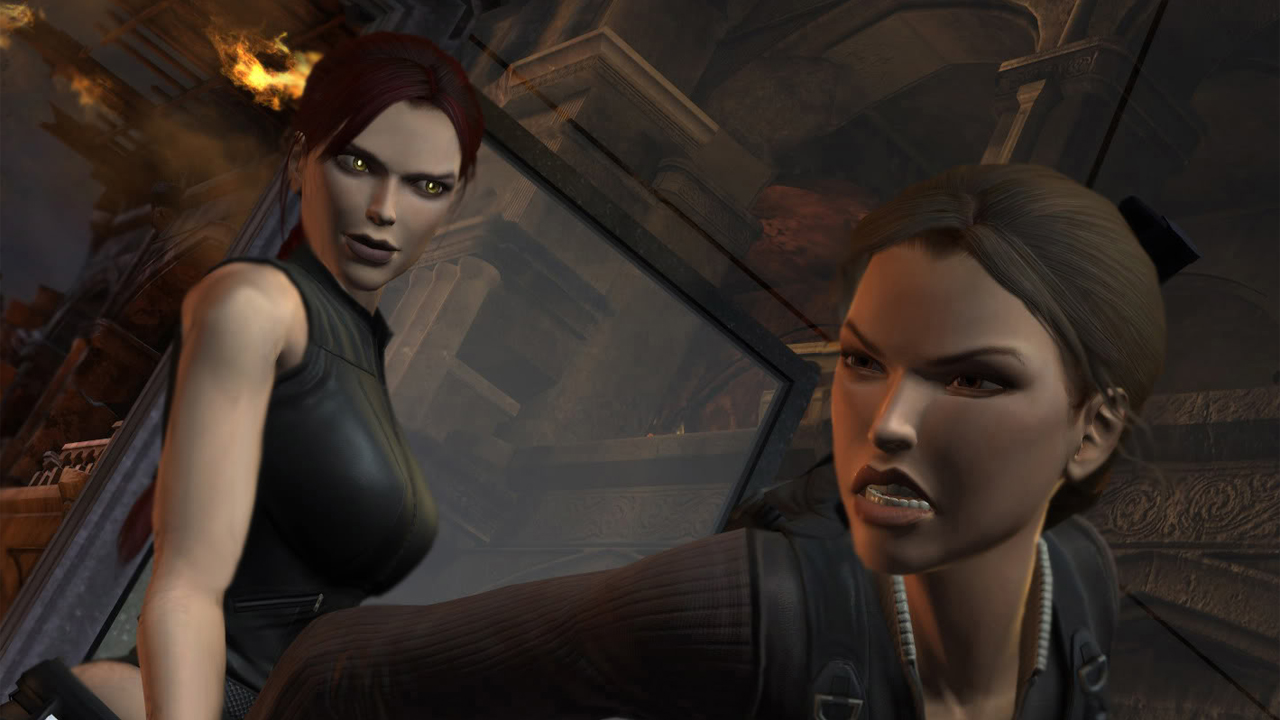
Runners-up: Thrall, a kraken
Though 'doppelganger' has taken on a more mundane meaning in recent years to describe that barista who looks just like your cousin, it's had a mythical meaning for much longer. That's the definition Tomb Raider Underworld appeals to when it introduces Lara's evil other.
Weekly digests, tales from the communities you love, and more
A near-perfect replica of Lara with redder hair and an unfortunate skin condition, the Doppelganger's significantly stronger and more ruthless than Lara herself. In theory, that makes her a harbinger of death, which doppelgangers and their close equivalents (like ankou and fetches) are meant to symbolize. Lara's process of dealing with her evil twin, meanwhile, is equally timeless: while attempts to banish the Doppelganger fail, she eventually realizes they have a common enemy and sets the Doppelganger free. At least she didn't actually say they're not so different after all.
Set (Tomb Raider Last Revelation)
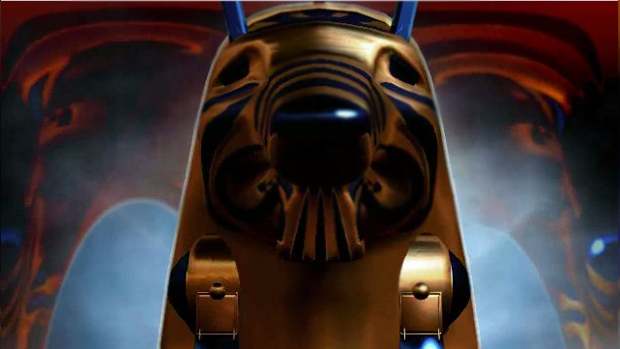
Runners-up: Harpies, ammit, elementals, mummies, possibly a Sphinx
Where she might have danced around the idea of battling deities in the last three games, The Last Revelation sends Lara right over the edge and has her facing an actual god. Specifically, she goes up against the Egyptian god Set, patron deity of storms, disorder, violence, and generally making a mess of things. He's perhaps most famous for murdering and dismembering Osiris, ruler of the afterlife and god of regeneration, and starting a decades' long feud with Osiris' posthumously-conceived son, Horus (don't think about that too much).
While Horus eventually overtakes Set as the king of Egypt, Tomb Raider adds an extra twist: Set's sealed away for his crimes, and will only be released when someone removes an ankh-shaped amulet from his sarcophagus. Which Lara does, in the name of treasure hunting. Nice going, Croft. And, in a unique and believable twist, Lara can't just fill the guy with bullet holes to get rid of him - she has to suffice for trapping him inside a tomb to save the world from his dark influence. Seems reasonable - a desert eagle feels a bit weak for the situation.
Ruler of Atlantis (Tomb Raider/Anniversary)
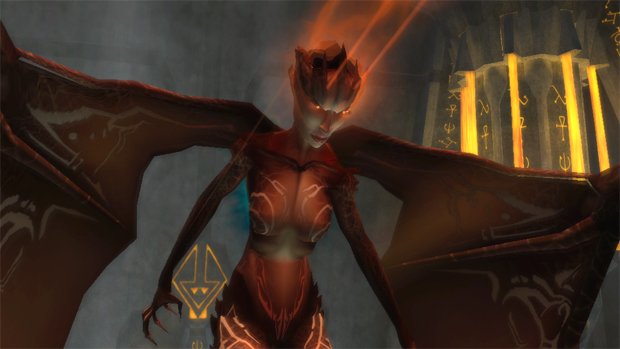
Runners-up: Centaurs, mummies
Though many of the early Tomb Raider games preferred inventing legends to adapting ones from the real world (who can tell what the Abomination's supposed to be) the first Tomb Raider is happy to mesh the two by pitting Lara against one of the former rulers of Atlantis.
The original story of this underwater metropolis doesn't really mention its rulers (the Greek Philosopher Plato allegedly invented the whole thing as an allegory for national hubris, and didn't really go into the details) but that's where Tomb Raider's gets creative: in the final battle, Lara fights Big Bad Natla in her true form, who looks a whole lot more like a Judeo-Christian demon (per depictions from the 14th century onward) than anything remotely aquatic. And there apparently isn't anything special to taking down an immortal demon goddess either - Lara just fills her up with lead and calls it a day.
Sea Serpent (Tomb Raider Legend)
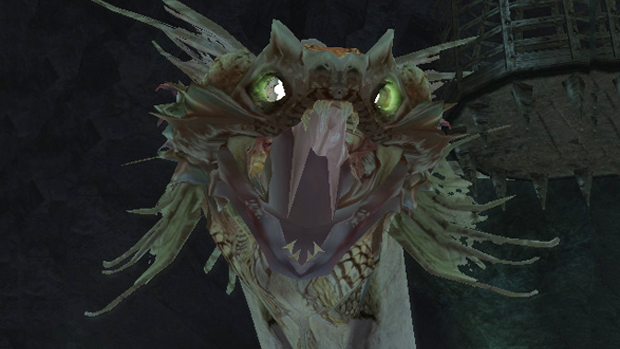
Runners-up: Not much
There's so much emphasis placed on mythical places and items in Tomb Raider Legend - most notably the legendary sword Excalibur and the final resting place of King Arthur, Avalon - that the focus on mythical creatures feels lacking by comparison. They're almost exclusively represented by a single cave-dwelling Sea Serpent outside King Arthur's tomb, who knows when she's been bested.
A pretty standard Leviathan, she pulls a sneak attack Lara while our hero is traversing the deep waters of an underground cave. This could possibly be a nod to the Loch Ness myth, as one theory suggests that Nessie was able to travel all over the British Isles through a series of underwater caverns, though Nessie isn't particularly serpent-like. Plus, the Serpent and Lara seem to leave on more positive terms than most of her mythical adversaries: while the Serpent does its best to eat her alive on the way out, it concedes defeat when Lara drops a gate to separate them, and disappears without much of a fuss.
Xolotl (Lara Croft and the Guardian of Light)
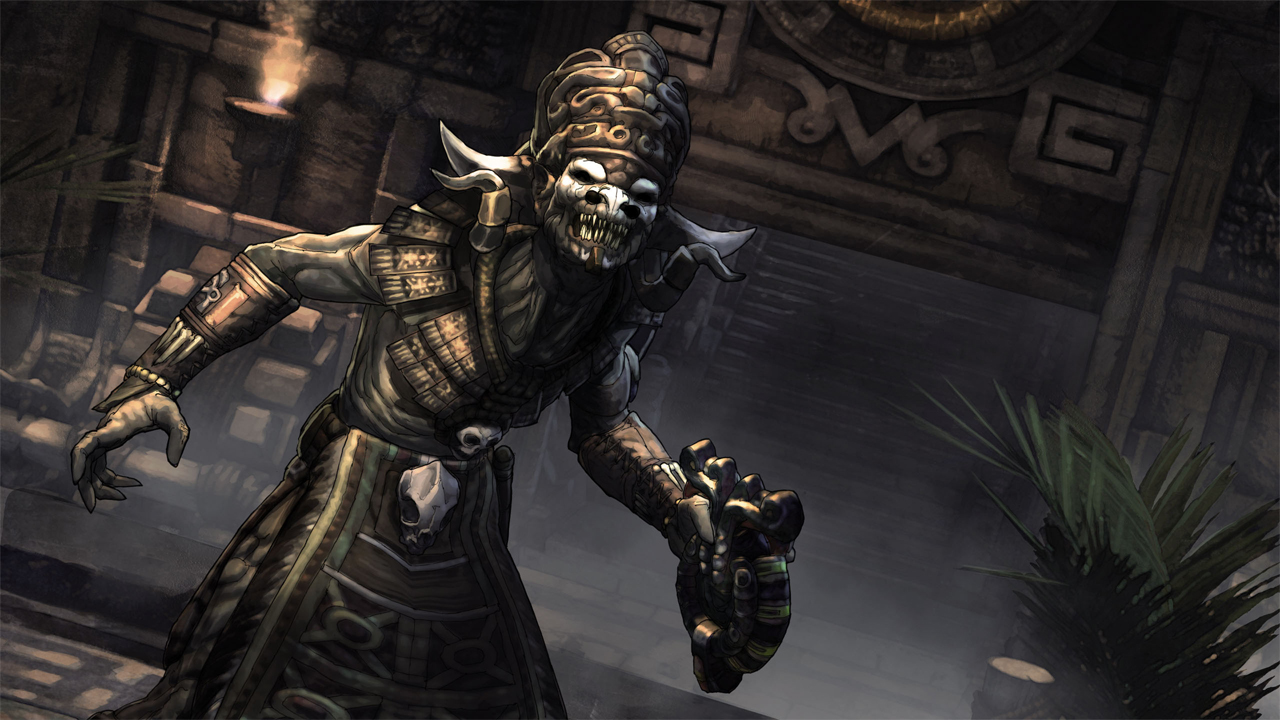
Runners-up: Giant spider, demon T-Rex
Gods of the underworld just can't get a break. Though in Aztec mythology Xolotl moves the sun through the land of the afterlife at night and sometimes helps guide the dead to their final resting place (and, ok, acts as the god of disease and deformities), that doesn't earn him a sympathetic treatment in the Tomb Raider universe. Not even the fact that he's usually depicted as dog-faced helps soften the image and, in fact, Guardian of Light makes him look a lizard-man with two giant sets of horns just to seal the evil deal.
Much like Set, he tries to take over the world, is narrowly defeated, and ends up sealed away (in a magic mirror this time) until his prison is disrupted in the modern age. He does have power over lightning in his and Lara's final battle, in keeping with his mythical representation, but that's where the resemblance stops. It's also where he stops, when Lara and Totec seal him back in the mirror for good.
Shiva statue (Tomb Raider 3)
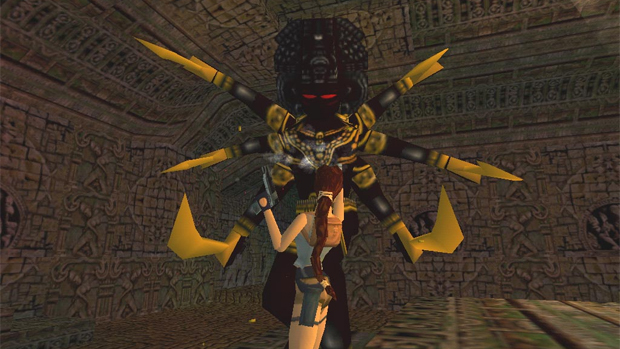
Runners-up: Giant dragonflies, mutants
Tomb Raider III is all about ancient temples and mysterious rituals, but the game has a lot more to do with monsters and mutants than myths. The only figures here that look anything like a familiar, legendary being are the Shiva statues, multi-armed stone carvings set in the Temple Ruins that come to life and try to make Lara's day a whole lot worse.
Aside from the multiple arms, these enemies don't bear much of a resemblance to the actual god Shiva of the Hindu faith. Most of his other features (the one's less obvious to non-Hindus) are notably absent, like the third eye and the crescent moon on top of his head. However, that doesn't mean Tomb Raider is entirely off-base: the statues bear a much closer resemblance to a manifestation of Shiva known as Bhairava, a vicious and menacing incarnation and a tool for punishing sinners. Somebody did their research here.
Apep (Lara Croft and the Temple of Osiris)
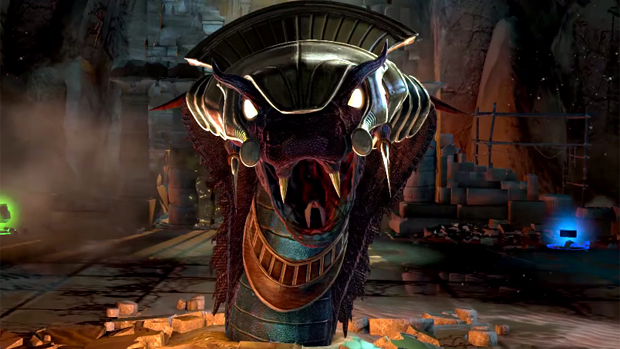
Runners-up: Ammit, giant scarab
Set's the one calling the shots again in Temple of Osiris, which makes the fact that snake god Apep shows up extra odd. In Egyptian mythology, Apep is the embodiment of chaos and the ultimate enemy of the sun god Ra, so basically an outright bastard. Even Set himself has no fondness for this jerk in the original legends, and volunteers to defend Ra from Apep during the former's travels to the underworld. You know Set's really gone off the deep end when Apep shows up in his army of darkness as a middling early boss.
But aside from the fact that he answers to Set, Apep's recreation in Temple of Osiris is fairly accurate. He's manifested as a snake, as he is in the legends, and is appropriately gigantic, since he was said to be large enough to swallow the sun. He's also way too tough to beat with guns, and Lara has to combine a magical staff with some fancy puzzle-solving to have even a chance of taking him down. It all checks out save for the fire-breathing.
Himiko (Tomb Raider reboot)
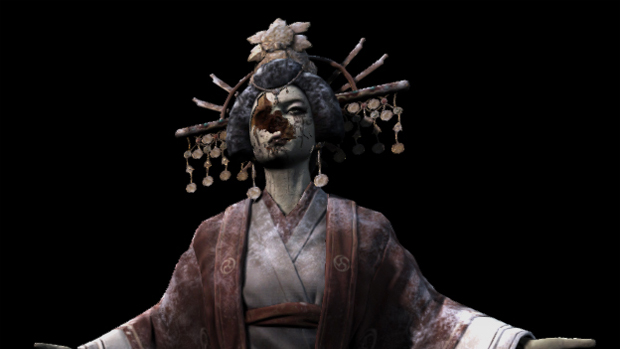
Runners-up: Oni
In its bid to revitalize Lara Croft for a new generation, the Tomb Raider reboot goes big. Not just in transforming Lara either, but by having her fight kill a legendary figure that might've actually existed. Himiko, the Sun Queen who remained eternally young by transferring her spirit into the bodies of young handmaidens, is based on the historical Queen Himiko, who was said to rule the country of Yamatai in Wa (the ancient name for Japan) during the second and third century CE. Though ancient Chinese records refer to her existence much more directly than Japanese records from the same period (which don't mention her by name at all), she is still well-known enough to have become a figure of renown in ancient Japanese history.
Her magical nature in Tomb Raider also comes straight from those same documents - though short of calling her a soul-sucking mystical tyrant, the official history of the Later Han dynasty claims that she used sorcery to bewitch her people into putting her on the throne. Still no mention of the whole spirit-transferring bit, but given how closely Tomb Raider follows the rest of her 'history', I think it can have that one.
Gargouille or Gargoyles (Tomb Raider Chronicles)
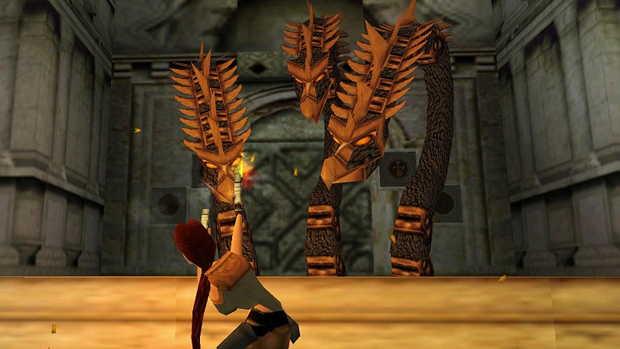
Runners-up: Imps, mermaids, demons
Some of you might be wagging al finger over this one, since Gargoyles are a thing that actually exist and are only mythical in Disney cartoons about religious tyranny (and Disney cartoons about New York). But the Gargoyle Serpents Lara fights in Tomb Raider Chronicles bear a striking resemblance to the progenitor of gargoyles, a creature of French myth called the Gargouille.
Supposedly, the Gargouille was a serpent-like dragon that terrorized the River Seine in Northern France, before the bishop of Rouen lured it onto land and killed it with the help of Rouen's townspeople. They burned the body, but found that the head and neck were impenetrable to flame, so instead they mounted it on the town cathedral, making it the first Gargoyle. The creatures Lara fights match that description well - lacking bodies outside their heads and elongated necks, they can't move from their spot in front of the church, attack Lara with fire, and don't sing a single song about friendship. It checks out.
Nephilim (Tomb Raider: Angel of Darkness)
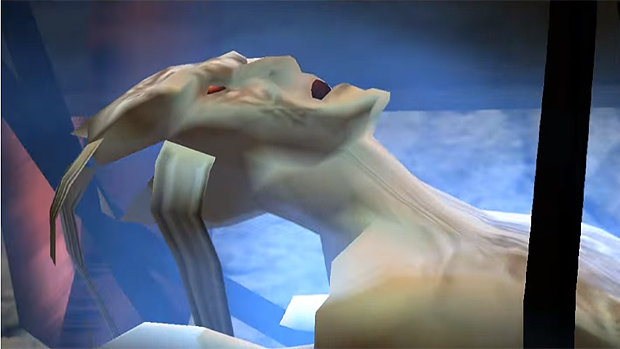
Runners-up: Ghosts, skeleton gladiators, carnivorous plants
Angel of Darkness is an apt title. Just as Lara dons a new getup that looks like it came from an Urban Outfitters/Hot Topic combo outlet, she ends up doing battle with the last living dark angels on Earth. Or rather, pseudo dark angels - the Nephilim are creatures of Biblical legend that are said to be the children of humans and "the sons of god", which some scholars have taken to mean angels. What the Nephilim actually look like is still a matter of scholarly debate, but the most popular theory suggests they're giants (which is how the name is translated in the King James Bible), a la Goliath from the David and Goliath myth.
For Tomb Raider's part, Angel of Darkness just makes them look like ugly humans with vaguely angelic powers, like the ability to take on different forms. They also perform pretty basic magic, for the sake of keeping the final boss fight interesting. Overall, it looks like the game took the closest thing it could find to 'dark angel' and ran with it.
Quezacoatl? (Lara Croft Go)
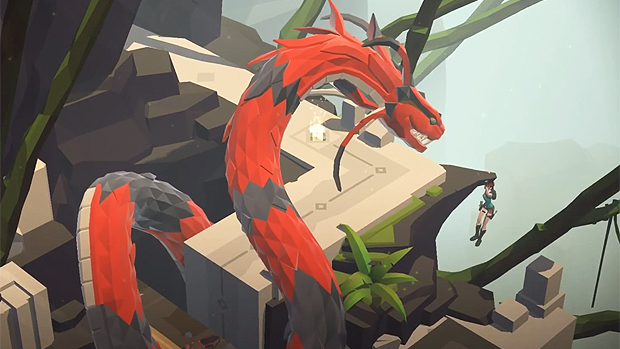
Runners-up: Lizard men, giant spiders
Sometimes a giant snake is just a giant snake, and other times it's a god whose very existence makes the world go 'round. It's hard to say for sure which the massive serpent in Lara Croft Go's snake maze is meant to be, since it's never actually named. However, the jungle setting in which it lives, the look of its body, and the way it moves around all suggest it could be one of the Feathered Serpents of Mesoamerican lore, like Quetzalcoatl.
Admittedly, the resemblance is mostly cosmetic - its skin appears to be made up of both feathers and scales just as Quetzalcoatl, symbolizing a traversal of the boundaries between earth and sky. The fact that it can bob and weave through the air like a sharp-toothed kite helps too. However, it's lacking symbolically - while Quetzalcoatl is the god of intelligence and creation, the creature that Lara faces just kind of bites at things, and all she has to do to bring it down is jam a spear through its mouth. Not particularly godlike, but this is Lara Croft - she's done worse to beings that are for sure gods.
Former Associate Editor at GamesRadar, Ashley is now Lead Writer at Respawn working on Apex Legends. She's a lover of FPS titles, horror games, and stealth games. If you can see her, you're already dead.



